Fillets, and a disaster dodged
Disaster nearly struck while filleting the hulls of our Quick Canoes. As I explained last time, the hulls are temporarily taped together with duct tape until they can be glued with a fillet of thickened epoxy. After I had applied the fillets and gone inside, some of the tape gave way at one end of one canoe - probably because the plywood was grimy with sawdust that gummed up the tape’s adhesive. The failure opened a gap out of which which the still-soft epoxy flowed, badly altering the shape and integrity of the chine.
Fortunately, I soon came back out for a once-over as the epoxy was setting up. The separated bottom panel was instantly noticable, due to the limp hanging tape. A quick poke with a tongue depressor confirmed that the epoxy was still soft and still leaking out. In fact, the fillet is a mixture of liquid epoxy and sawdust-like thickener, with the target thickness described as “peanut butter”. Mine was more Adams than Skippy, so most fillets were sagging quite a bit. As a result, the vertical fillet in the end right next to the failed tape was draining out the bottom of the boat.
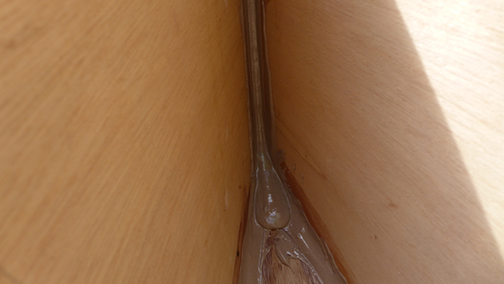
Quickly, I decided that the important thing was for the bottom and sides to be tightly joined when the epoxy cured. Then I went to work on an emergency repair: I wrapped tape tightly around and around the affected end, which held the panels together but spoiled the intended sheerline at that end of the boat.
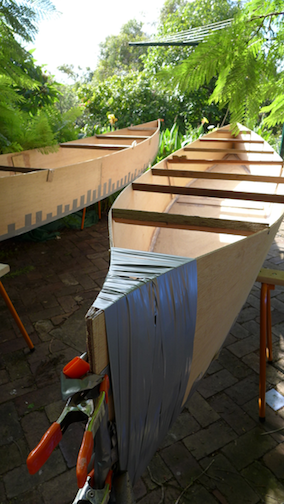
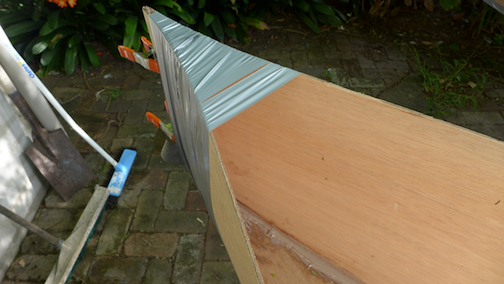
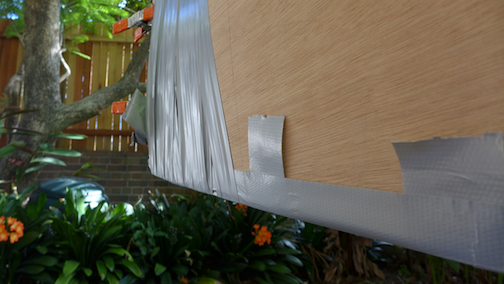
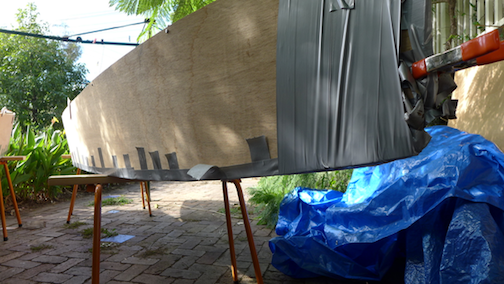
That very narrow shape is now a permanent feature of that hull, which will be a problem when fitting the gunwales. There is an ugly glob of epoxy that leaked out of the chine and cured before I dared to remove the emergency tape. Cured epoxy is a bitch to sand or grind away by hand, so I will just leave it. It’s gonna affect the boat’s looks but not its performance (I hope).
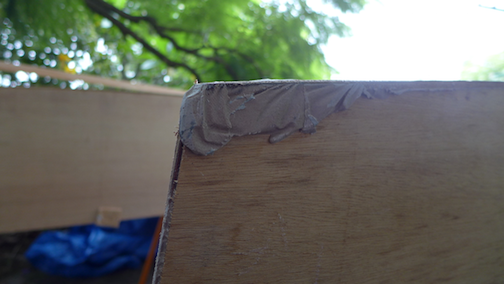
The other hull came together without incident:
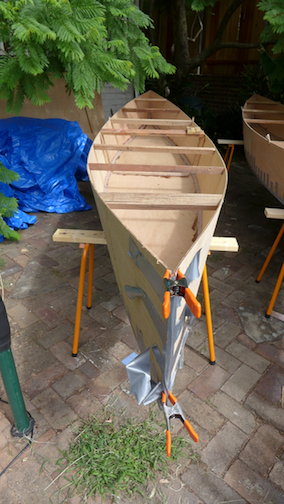
Lessons learned
The thickened epoxy needs to be a stiffer mixture than I’d thought. However, this thick mixture interferes with advice in the instructions, which call for cutting a filleting tool with a 20mm radius out of scrap plywood. The idea is that you squirt or smear the fillet mixture into the chine, then run the tool along the top to smooth it out and ensure the fillet is properly sized.
In my experience, the properly-thickened mixture will stick to the tool rather than running smoothly underneath it. You end up pulling the mixture out of the chine and amking a big mess. I ended up just using a large tongue depressor to pat down and smooth out the top of the fillet. This probably means I over-applied the mixture. If you want to use a tool as described in the plans, make sure its edge is very sharp and then wrap it in packing tape so the epoxy is less likely to stick to your tool.
Here’s a picture of a good fillet from one of the Quick Canoes. At the time, I thought this was too dry (notice the rough surface). But it held its shape while curing while anything with a glistening liquidy surface tended to sag or run.
